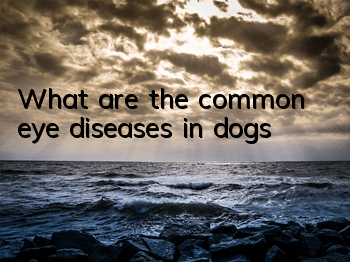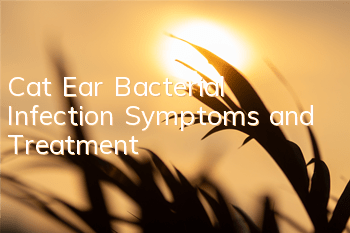Dog owners all know that relatively few people pay attention to the eye health of dogs, and dogs suffer from some eye diseases due to the negligence of pet owners. So, what are the common eye diseases that dogs suffer from?
The most common disease of dog eyes: conjunctivitis
As you can tell from the name, conjunctivitis in pet dogs is an inflammation of the dog’s conjunctiva. Symptoms may include inability to open the eyes, watery eyes, red eyes, etc. Because the conjunctiva is a protective film covering the surface of the eye to block external stimulation, the first symptoms caused by external stimulation are conjunctival symptoms, such as dirt getting into the eyes, being smoked, being exposed to chemicals, etc. If the product is sprayed into the eyes, etc... the first thing it causes is conjunctival inflammation.
Common eye diseases in dogs: keratitis
There has always been a saying that the eyes are the windows to the soul, and the cornea is the glass of the window. Many cases of keratitis are caused by traumatic stimulation, and there are also complications caused by infectious diseases such as canine distemper. The cornea should be transparent and clear. When a dog suffers from keratitis, the cornea will become cloudy and cause eye pain and tearing. But the difference from conjunctivitis is that the dog’s eyes should not look so red. The main symptoms are concentrated in the cornea in the middle of the eyeball.
Common eye diseases in dogs: Entropion
Entropion of the eyelids sounds like a serious disease. In fact, to put it bluntly, it is what we often call "trichiasis." The innermost side of the dog's upper eyelids turns inward, causing the eyelashes to get stuck in the eyes. Many dogs have this problem, which can be solved by doing something like double eyelid surgery. Entropion of the eyelids will cause the dog's eyes to shed tears and blink all the time. If the eyelashes irritate the eyes for a long time, it will cause keratitis and conjunctivitis.
Common eye diseases in dogs: cataracts
Cataract is a disease that occurs in the lens of the dog's eye. It is a serious disease among the common eyes of dogs, because it can cause blindness in the eyes of dogs. There are many reasons for cataracts, some are congenital, some are caused by old age, or are caused by trauma, etc. When cataracts first develop, dogs do not have obvious vision problems. As the transparency of the lens weakens, vision will gradually be affected. If the dog is older, you should pay attention to the dog's eyeballs at ordinary times. If you find that they are not as bright or clear as before, you should be aware that the dog may have cataracts.
There are actually many diseases that dogs’ eyes may suffer from, butThe probability of normal occurrence is relatively low, such as dry eye syndrome, ectropion, retinitis, glaucoma, etc. At the same time, the possibility of most dogs suffering from these diseases is still relatively small.
What breeds of dogs around us are more likely to suffer from eye problems and how should we care for them!
Dogs with flat faces such as Pugs, Pekingeses, and Shih Tzus have large and protruding eyeballs, which have a large contact area with the outside world and are easily contaminated with foreign matter and bacteria, eventually leading to eye diseases.
Pug dogs, bulldogs, etc. are prone to inverted eyelashes. Because of the many wrinkles on the head, Shar-Pei is prone to entropion of the eyelids.
White dogs such as white poodles, Pomeranians, and Bichons. Dogs with white fur are more prone to tear stains. When the tear ducts of white dogs are blocked, the tears may not flow out normally, and eye feces will form in the corners of the eyes. Over time, such as Without care, brown tear lines will form.
Excessive secretions around the eyes are mostly caused by irritation from hair, foreign matter, dust, etc. or blocked tear ducts or inverted eyelashes. If there is excessive secretions, scrub the face with a damp cloth every day, and then clean the corners of the eyes with a wet cotton ball (do not use cotton balls). Wipe your eyes with a ball to avoid scratching the cornea), or rinse with saline.
Puppies with protruding eyes need a few drops of eye drops every day to keep their eyes moist and comfortable (some brands of human eye drops are also suitable, but you need to seek the advice of a doctor).
Light-colored puppies have obvious tear stains (brown stripes under the eyes), which need to be cleaned diligently and scrubbed every day. Apply the remover to the fur at the tear (not to eyes) according to the product instructions for each breed. If your dog is a "little tearful person", even if it is wiped clean every day, it will still often shed tears. However, if you notice unusual redness or swelling around your eyes, you should seek medical advice.
Keep checking, cleaning and moisturizing your dog's eyes every day, and he will soon get used to it.








